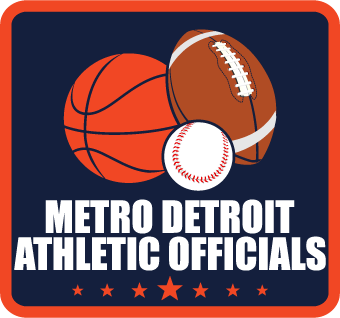SITUATION 1: The catcher has purchased a new hockey-style catcher’s helmet. The helmet (a) was purchased with a tinted, attached eye shield, or (b) the catcher later purchased a clear eye shield and had it installed. RULING: In both (a) and (b), the helmet is not legal for use. Eye shields attached after manufacture are not permitted. Legal eye shields, attached at the time of manufacture, must be clear without the presence of any tint. (1-5-4)
SITUATION 2: The catcher is wearing a pair of sunglasses underneath the face mask. RULING: This is legal. A catcher may wear tinted eyewear on the face and under the face mask. (1-5-4)
SITUATION 3: The pitcher is wearing a gold cross that dangles from a chain around the neck. With the sun’s position, there is a glare from the cross into the home plate area. RULING: All players may wear jewelry while on the bench and/or while participating in the game. If the wearing of jewelry is judged by the plate umpire to be distracting to the batter, the plate umpire may direct the pitcher (or any other fielder) to remove the jewelry until conditions are such that the jewelry is no longer distracting to the batter. (6-2-1f PENALTY)
SITUATION 4: The shortstop is wearing a bracelet that has jagged points on it. The base umpire notices the bracelet and requires the shortstop to remove it. RULING: While jewelry may be worn by all players, it cannot be the type that may cause harm or injury to the wearer, teammates or opponents. If the umpire judges the bracelet to be dangerous, it must be removed. (1-5-9)
SITUATION 5: The second baseman had bracelets made for all teammates that has a derogatory, taunting word aimed at the opponents. RULING: The umpires shall require that the bracelets be removed. Unsporting actions that reflect unfavorably upon the other team cannot be allowed. (3-3-1f2)
SITUATION 6: The pitcher takes a position with the pivot foot in contact with the pitching plate, and not parallel to it, and the non-pivot foot clearly in front of the front edge of the pitcher’s plate. The head coach of the offensive team complains that this is an illegal pitching position and must be penalized. RULING: The pitching position from which a pitcher is pitching is determined by the position of the pivot foot only. Where the non-pivot foot is placed no longer is a determining factor for the pitching position. With the pivot foot in contact but not parallel to the pitcher’s plate, the pitcher is in a legal windup position. (6-1-1)
SITUATION 7: With R3 on third base, the pitcher assumes a legal windup position with the pivot foot in contact but not parallel to the pitching plate. As the pitching movement begins, the pitcher rotates the pivot foot such that it is still in contact with and now parallel to the front of the pitcher’s plate. The pitcher now steps to and gains ground as a pickoff is made to occupied third base. The offensive head coach complains that this is a balk while the defensive head coach asserts that since only the pivot foot determines the pitching position, all the pitcher did was change from the windup to the set position. RULING: The pitcher has committed a balk. To change from the windup position, the pitcher must first step backward off the pitcher’s plate, which must be in or partially within the length of the pitcher’s plate. (6-1-2, 6-1-3)
SITUATION 8: The pitcher takes a position on the pitcher’s plate such that the umpire is in doubt if the pivot foot is simply in contact with the pitching plate or in contact and parallel to the pitching plate. What should the umpire determine? RULING: To be in the set position, the pitcher must have his pivot foot in contact with or directly in front of and parallel to the pitcher’s plate. If the pivot foot is in contact with but not distinctly parallel to the pitcher’s plate, then the pitcher is judged to be in the windup position. (6-1-1, 6-1-2, 6-1-3)
SITUATION 9: A group of spectators, as well as some of the opposing players, have been taunting the plate umpire on the strike zone being called. What shall the umpire do? RULING: Umpires have jurisdiction over the field of play while game administration is to handle issues in the stands or situations involving spectators. If there is an issue outside the confines of the field that must be addressed, the umpires should halt the game and request game administration to handle the issue. If game administration is not present or unable to remedy the situation, the game should be suspended. (10-2-3h)
SITUATION 10: The batter, with a runner on second base and no outs, swings and misses at strike three. The pitch gets by the catcher and goes into a dead-ball area. RULING: Award one base to all runners, including the batter-runner. The batter became a batter-runner upon the third strike. (8-1-1b, 8-3-3d)
https://www.nfhs.org/sports-resource-content/baseball-rules-interpretations-2023/
